These are the best Windows i9 laptops of 2024 according to the latest benchmarks
15 min. read
Updated on
Read our disclosure page to find out how can you help MSPoweruser sustain the editorial team Read more
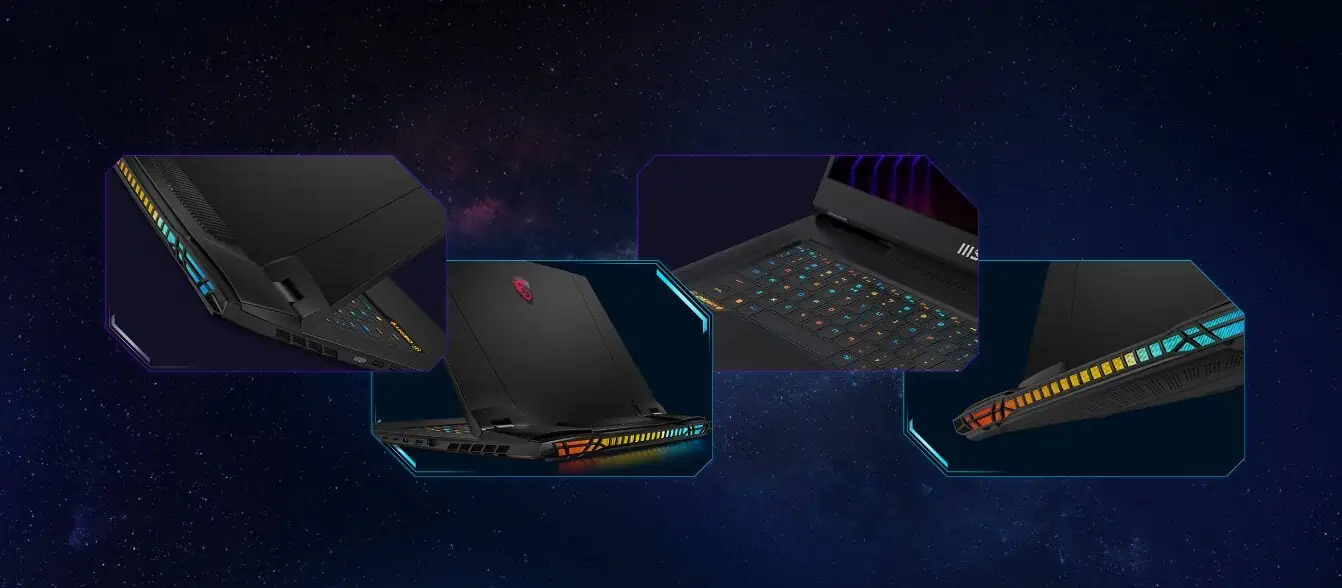
Looking for the best Windows i9 laptops of 2023? Aside from the device’s features, it is the CPU you should greatly consider. Thankfully, Intel offers boatloads of i9 mobile processor models, but which ones are considered the best by today’s standards? Besides looking for a higher core count and faster clock speed, considering benchmark scores of CPUs can guide you in selecting the right Windows i9 laptop for your needs.
Benchmarking Intel Core i9 CPUs
Real-world benchmarking is undeniably better than synthetic one as it will give you the actual data of the CPU performance in specific apps and programs. However, in this review, we will focus on evaluating the overall strength of i9 CPUs, which can guide you in selecting the best Windows i9 laptops that can handle various tasks.
There is a bunch of benchmarking tools that can be used for synthetic benchmarking. Note, nonetheless, that relying on different data from these multiple tools is recommended as some CPUs stand out at certain CPU benchmark tests. Thus, comparing different synthetic benchmarking scores will better help you validate the performance of the CPU. And while these benchmarking tools have their own scoring systems, remember that high scores mean high performance in CPUs.
Picking i9 CPU models
Although Intel already offers the 13th generation of its i9 processors called Raptor Lake, there are also other earlier i9 models worth considering, especially if you will compare their value, performance, and price to those of the latest models. As such, aside from the recently released models from the higher generation processors, we listed one earlier Intel Core i9 model that still holds great value.
In this review, we listed benchmark scores plotted on various benchmarking platforms that use different tools in the test process. And for data uniformity, we observed consistency in terms of the particular tools and platforms we listed here.
With all that, here are the benchmark scores of these Core i9 models alongside the best Windows laptops that possess them.
CPU Benchmarks and Best Windows i9 Laptops
Core i9-12950HX
This processor was released in May 2022 and falls under the Alder Lake-HX line and the 12th generation of Core i9. The chip comes with 16 cores (24 threads) and 55 watts of base power (maximum turbo power of up to 157W). Its performance and efficiency cores possess 2.3 GHz and 1.7 GHz base frequencies, respectively, while their maximum turbo frequencies come at 5.0 GHz and 3.6 GHz, respectively. Although Core i9-12950HX is similar to Core i9-12900HX, its vPro management platform eligibility helps it stand out. With all these things and reasonable threaded performance, it can be a decent chip for gaming. Here are some of Core i9-12950HX’s latest benchmark scores:
PerformanceTest V10: 3, 878 (Single Thread Rating), 32, 757 (Average CPU Mark)
Integer Math: 112,392 MOps/Sec
Floating Point Math: 82,667 MOps/Sec
Find Prime Numbers: 143 Million Primes/Sec
Random String Sorting: 43 Thousand Strings/Sec
Data Encryption: 22,034 MBytes/Sec
Data Compression: 370.6 MBytes/Sec
Physics: 2,187 Frames/Sec
Extended Instructions: 22,616 Million Matrices/Sec
Single Thread: 3,878 MOps/Sec
Cinebench R23: 1,991 (Single-Core), 23,191 (Multi-Core)
Geekbench 5: 1,904 (Single-Core), 16,233 (Multi-Core)
Passmark CPU: 3,863 (Single-Core), 32,633 (Multi-Core)
Average Bench: 107%
LaptopMedia
Cinebench R23: 23,395 (Multi-Core)
Cinebench R20: 7,159 (Multi-Core)
Cinebench R23: 1,906 (Single-Core), 23,113 (Multi-Core)
Cinebench R20 CPU: 741 (Single-Core), 8,777 (Multi-Core)
Cinebench R15: 276 (CPU Single 64 Bit), 3,530 (CPU Multi 64 Bit)
7-Zip 18.03: 6,318 MIPS (Single Thread 4 runs), 85,019 MIPS (Multi Thread 4 runs)
HWBOT x265 V2.2 4k Preset: 26.5 fps
Blender 3.3 Classroom CPU: 337 seconds
Blender 2.79 BMW27 CPU: 193 seconds
R Benchmark 2.5: 0.4515 sec
3DM11 Performance Physics: 23,711
3DMark Ice Storm Physics: 99,481
3DMark Cloud Gate Physics: 22,793
3DMark Fire Strike Standard Physics: 34,733
3DMark Time Spy CPU: 14,615
Geekbench 5.1 – 5.4 64 Bit: 1,924 (Single-Core), 16,009 (Multi-Core)
Geekbench 5.0 64 Bit: 1,855 (Single-Core), 14,728 (Multi-Core)
Mozilla Kraken 1.1: 506 ms
Octane V2: 94,008
WebXPRT 4: 286
WebXPRT 3: 324
CrossMark: 2,112
WHAT LAPTOPS USE CORE I9-12950HX?
Core i9-12950HX is widely available, and there are a good number of laptop models that now utilize this chip. Two of the best ones currently offering Core i9-12950HX are the Lenovo ThinkPad P16 and Asus ROG Strix Scar 17 SE.
ThinkPad P16: ThinkPad P16, which includes the Core i9-12950HX, is the successor of ThinkPad P15 and P17. With a 2.95kg weight and dimensions of 14.3 x 10.5 x 1.2 inches, P16 is a huge laptop considered a desktop replacement or a mobile workstation. However, unlike Asus ROG Strix Scar 17 SE, P16 is not specifically designed for gaming despite possessing the Core i9-12950HX, which should make the cut for such a purpose, as PassMark noted. So what is it for? Instead of gaming, this P16 with extreme performance hardware will be ideal for professionals who need heavy-duty laptops for specialized tasks, such as 3D design, CGI rendering, data analysis, machine learning, or 4K video editing. The model can handle such heavy tasks, but pushing the CPU and GPU to the limit means shorter hours from its 94Wh battery. Yet, according to XDA’s test using PCMark 10’s Modern Office rundown test, P16 lasted 7 hours running standard productivity work under Best Performance mode. This means opting for a lower mode can lead to longer battery hours.
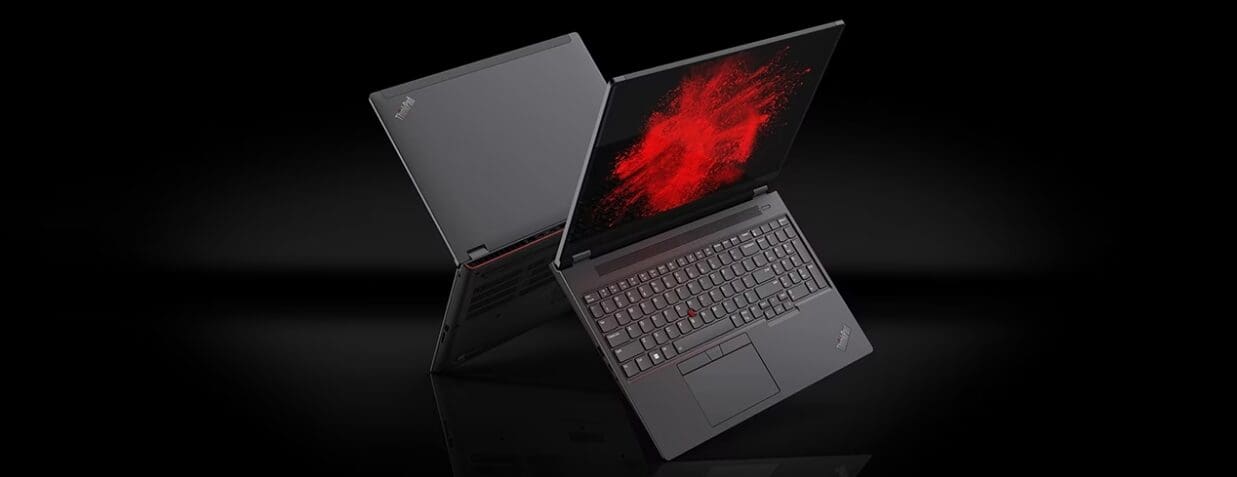
Moreover, P16 is filled with high-end features, including an excellent keyboard, up to OLED UHD+ with 100% DCI-P3 color, up to an NVIDIA RTX A5500 laptop GPU, and more. It also has plenty of ports, including two Thunderbolt 4, USB-C 3.2 (Gen 2), two USB-A 3.2 (Gen 1), HDMI, 3.5mm audio, an SD card reader, and a Nano-SIM slot (optional). There are also options for 4G LTE and NFC optional.
Meanwhile, the placement of Core i9-12950HX in P16 is supported with a decent cooling system via the two large fans partnered with heat pipes and spreaders, which worked effectively in balancing the temperature even during an Intel Turbo burst test. And to give you more idea of how Core i9-12950HX performs in P16, here are some benchmark scores (via XDA):
Geekbench 5: 1,836 / 15,464
CPU-Z: 791.3 / 9,308
7-Zip: 105.3 GIPS / 121.8 GIPS
Cinebench R23: 1,868 / 19,410
Corona 1.3: 71 seconds
PCMark 10: 6,782
CrossMark: 1,879
3DMark Time Spy: 10,410
3DMark Fire Strike: 26,213
CrystalDiskMark (MB/s): 6,967 (read) / 5,124 (write)
Asus ROG Strix Scar 17 SE. This model utilizing Core i9-12950HX and NVIDIA GeForce RTX 3080 Ti GPU is designed for gaming. There is also an RTX 3070Ti variant, but it doesn’t have a vapor chamber cooling system, which you would certainly appreciate. It is considered a high-end gaming laptop with the said GPU and CPU (and a fast 240-Hz display), which means it could cost a lot. Yet, it is capable of delivering great gaming performance. On the downside, it can be a bit limiting for productive office tasks, especially since it lacks a webcam, though you could be offered an external webcam (ROG Eye S). Does it make ROG Strix Scar 17 SE less enticing? No. But it stresses Asus’ objective for this model: to be a dedicated gaming unit.
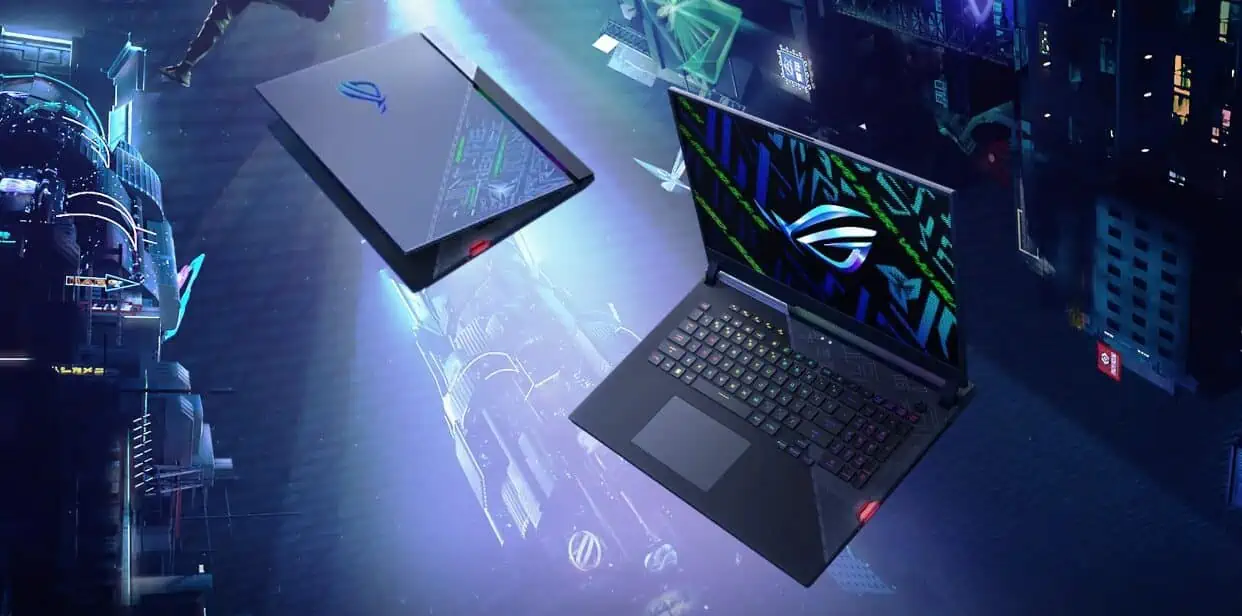
With the combination of Core i9-12950HX and NVIDIA GeForce RTX 3080 Ti in this model, a wide variety of games and works can be handled efficiently. It is also fashioned with a thick rubberized grip underneath, RGB lighting in the ROG logo, and an “invisible ink” print visible under UV light, which further underscores its design as a gaming model. ROG Strix Scar 17 SE also comes with two USB-A 3.2 gen1, a USB-C with Thunderbolt 4, a USB-C gen2 with video and data, an HDMI 2.1, LAN, and headphone and mic ports.
In terms of performance, the GPU and CPU can deliver pleasing work, especially with a 1,590 MHz boost clock and 170W max graphics power from the former, giving you reliable frame rates at 1080p and native 2560 x 1440 resolution. During the benchmark test of Tom’s Hardware to Asus ROG Strix Scar 17 SE using different games, the model performed at 144fps at 1080p and 91fps at 1440p in Grand Theft Auto V (Very High setting), 125 fps at 1080p and 113 fps at 1440p in Far Cry New Dawn (Ultra), 85 fps at 1080p and 61 fps at 1440p in Red Dead Redemption 2 (Medium), 119 fps at 1080p and 83 fps at 1440p in Shadow of the Tomb Raider (Highest), and 109fps at 1080p and 79fps at 1440p in Borderlands 3 (Badass).
Core i9-13980HX
This flagship 13th-generation mobile CPU model is under Raptor Lake-HX and is dedicated to gaming laptops. The arrival of Core i9-13980HX, which boasts a 5.6GHz turbo frequency, signals the first 24-core configuration support in a laptop CPU. Intel itself described Core i9-13980HX as the “world’s fastest mobile processor” when it was released in January. In particular, the company claimed it could provide up to 11% faster single-thread performance and up to 49% faster multitasking performance compared to its 12th gen siblings.
The 55W chip has eight performance cores and 16 efficiency cores, which can lead to very high multi-thread performance. Moreover, it offers support for DDR4 and DDR5 memory, PCIe Gen 5 connectivity, up to 5.6 gigahertz (GHz) turbo frequency, 32 threads, 128 gigabyte RAM, and Thunderbolt 4 with transfer speeds up to 40 gigabits per second. Its base clock frequency is 2200 MHz, but it can reach up to 5600 MHz due to Turbo Boost technology.
According to PassMark, the chip “has great single threaded performance that will serve well in games” and could be considered “a high end chip that would be great for gaming” when paired with a good video card. Here are the benchmark scores of Core i9-13980HX.
PerformanceTest V10: 4,400 (Single Thread Rating), 49, 223 (Average CPU Mark)
Integer Math: 177,236 MOps/Sec
Floating Point Math: 126,291 MOps/Sec
Find Prime Numbers: 202 Million Primes/Sec
Random String Sorting: 73 Thousand Strings/Sec
Data Encryption: 38,045 MBytes/Sec
Data Compression: 615.8 MBytes/Sec
Physics: 2,492 Frames/Sec
Extended Instructions: 36,108 Million Matrices/Sec
Single Thread: 4,400 MOps/Sec
Cinebench R23: 2, 140 (Single-Core), 30, 769 (Multi-Core)
Geekbench 5: 2,098 (Single-Core), 20, 300 (Multi-Core)
Average Bench: 117%
Cinebench R23: 30,796 (Multi-Core)
Cinebench R20: 11,789 (Multi-Core)
Cinebench R23: 2,169 (Single-Core), 33,052 (Multi-Core)
Cinebench R20 CPU: 825 (Single-Core), 12,437 (Multi-Core)
Cinebench R15: 312 (CPU Single 64 Bit), 5,172 (CPU Multi 64 Bit)
Cinebench R11.5 CPU 64 Bit: 3.7 (Single), 55.8 (Multi)
Cinebench R10 Rend 32 Bit: 11,940 (Single), 85,088 (Multi)
Cinebench R10 Rend 64 Bit: 17,400 (Single), 125,983 (Multi)
wPrime 2.0 1024m: 183.5 s
wPrime 2.0 32m: 3 s
WinRAR 4.0: 11,438 points
7-Zip 18.03: 7,084 MIPS (Single Thread 4 runs), 125,720 MIPS (Multi Thread 4 runs)
X264 HD Benchmark 4.0: 374 fps (Pass 1), 198.1 fps (x264 Pass 2)
HWBOT x265 V2.2 4k Preset: 33.4 fps
TrueCrypt Serpent: 2.5 GB/s
TrueCrypt Twofish: 4.9 GB/s
TrueCrypt AES: 18.4 GB/s
Blender 3.3 Classroom CPU: 201 seconds
Blender 2.79 BMW27 CPU: 112 seconds
R Benchmark 2.5: 0.4008 sec
3DMark 06 – CPU: 19,734
Super Pi mod 1.5 XS: 7.4 s (1M), 15.5 s (2M), 345.8 s (32M)
3DM11 Performance Physics: 26,524
3DMark Ice Storm Physics: 96,956
3DMark Ice Storm Extreme Physics: 91,414
3DMark Ice Storm Unlimited Physics: 94,552
3DMark Cloud Gate Physics: 24,650
3DMark Fire Strike Standard Physics: 41,205
3DMark Time Spy CPU: 15,908
Geekbench 5.1 – 5.4 64 Bit: 2,139 (Single-Core), 20,847 (Multi-Core)
Mozilla Kraken 1.1: 460 ms
WebXPRT 4: 318
WebXPRT 3: 344
CrossMark: 2,182
WHAT LAPTOPS USE CORE I9-13980HX?
Despite being new to the market, there are already laptops using Core i9-13980HX. The top player in this section is Asus, which now offers the ROG Strix Scar 18.
Asus ROG Strix Scar 18. This model is another gaming laptop packed with powerful hardware. Aside from the Intel Core i9-13980HX CPU, it gives you the option for GeForce RTX 4080 12GB or Nvidia’s top mobile GPU this year, the RTX 4090 16GB. Its body dimension (1.21 x 15.71 x 11.57 inches) and 3 kilos of weight make it a rather huge unit, but its highest-end mobile hardware and overall performance justify everything. These things include the big 18-inch anti-glare screen boasting a 2,560 x 1,600 resolution with a 240Hz refresh rate.
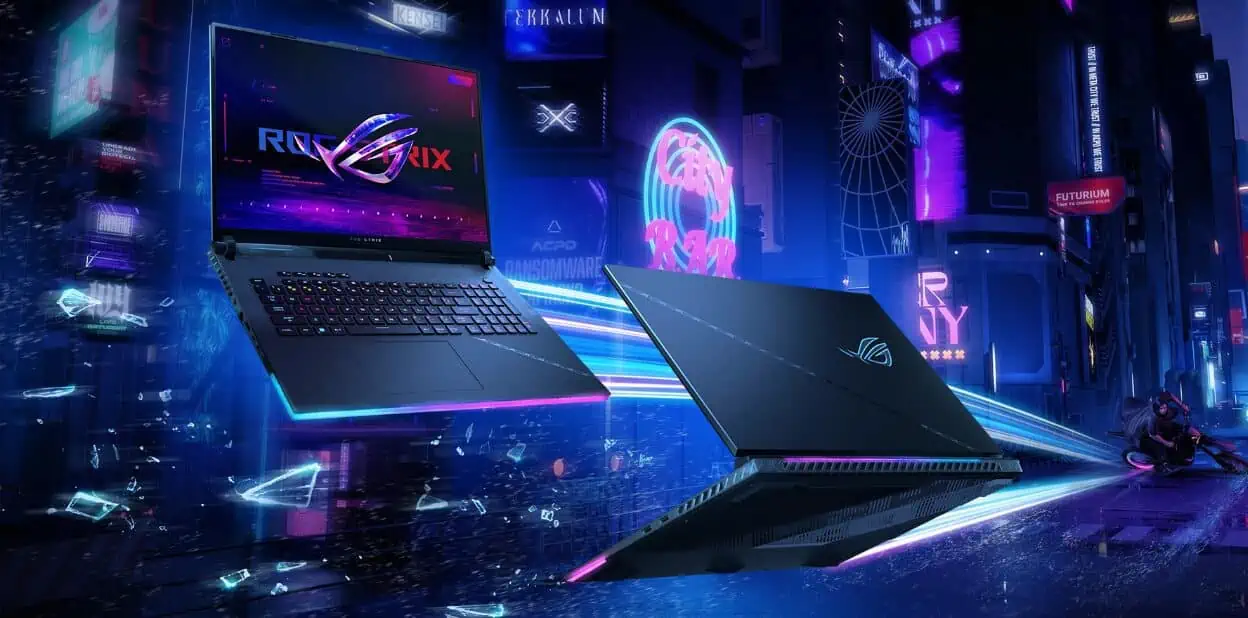
As a gaming laptop, you can expect different game-related elements on the body of Strix Scar 18. It also has RGB lighting across the keyboard. The downside of this model, however, is the plastic material used on many of its external parts and the lack of touchscreen capability of the screen, making its reputation as a “high-end” laptop a bit questionable for some. On a positive note, compared to ROG Strix Scar 17 SE, Strix Scar 18 has a camera despite being designed as a gaming laptop.
According to PCMag, the cooling system of Strix Scar 18 works efficiently, preventing you from feeling the heat from most of its parts. The downside about this, however, is a rather loud fan sound when the machine is put under heavy activities and gaming.
On a positive note, the Asus Strix Scar 18, in general (thanks to its powerful set of hardware components), can ace different tests. In PCMag’s productivity test using PCMark 10, it scored 9,129. Meanwhile, the laptop’s Core i9-13980HX processor scored 28,713 in Cinebench R23 and 20,402 in Geekbench. Under the other tests, ROG Strix Scar 18 hit 20,283 points in 3DMark Time Spy, 73,509 in 3DMark Night Raid, 505 in GFXBench 5.0 Aztec Ruins, and 901 in Car Chase. Here are more benchmarks from Notebookcheck to complement these figures:
PCMark 10: 8,764
3DMark 06 Standard Score: 67702 points
3DMark 11 Performance: 46985 points
3DMark Ice Storm Standard Score: 277937 points
3DMark Cloud Gate Standard Score: 70984 points
3DMark Fire Strike Score: 36408 points
3DMark Fire Strike Extreme Score: 24278 points
3DMark Time Spy Score: 20166 points
Cinebench R10 Shading 32Bit: 24410
Cinebench R10 Shading 64Bit: 25072 Points
Cinebench R10 Rendering Single 32Bit: 11940
Cinebench R10 Rendering Multiple CPUs 32Bit: 85088
Cinebench R10 Rendering Multiple CPUs 64Bit: 125983 Points
Cinebench R10 Rendering Single CPUs 64Bit: 17400 Points
Cinebench R11.5 CPU Multi 64Bit: 55.79 Points
Cinebench R11.5 CPU Single 64Bit: 3.73 Points
Cinebench R11.5 OpenGL 64Bit: 204.24 fps
Cinebench R15 CPU Single 64Bit: 312 Points
Cinebench R15 Ref. Match 64Bit: 99.6 %
Cinebench R15 OpenGL 64Bit: 322 fps
Cinebench R15 CPU Multi 64Bit: 4781 Points
On the other hand, PCMag shared that Strix Scar 18 managed to reach up to 173fps with DLSS activated when used in F1 2021, 159fps at 1080p (Ultra) in Assassin’s Creed Valhalla, and 390fps at 1080p (Ultra) in Rainbow Six Siege. On the other hand, its built-in display’s native 2,560 x 1,600 resolution delivered 164fps in F1 2022 with DLSS activated, 116fps in Assassin’s Creed: Valhalla under Ultra, and 422fps in Rainbow Six Siege also in Ultra. Tom’s Hardware, meanwhile, reported that the machine performed at 181 fps at 1080p and 124 fps at its native 2560 x 1600 in Shadow of the Tomb Raider (Highest setting) and 152 fps at 1080p and 132 fps at 2560 x 1600 in Grand Theft Auto V (Very High setting). In Cyberpunk 2077, the laptop reportedly reached 40fps with DLSS off when its native resolution was employed under Ultra preset, according to PCMag, who also said seeing it bump to 84.3fps under Auto and 131fps with DLSS 3’s frame generation technology activated.
MSI Titan GT77 HX. If you want the closest rival of the Asus ROG Strix Scar 18, consider MSI Titan GT77 HX, which also uses Intel Core i9-13980HX and Nvidia GeForce RTX 4090 graphics card. Despite this, it has few significant advantages over Strix Scar 18. For instance, in the tests performed by PCMag, Titan GT77 HX scored a few more points than the other.
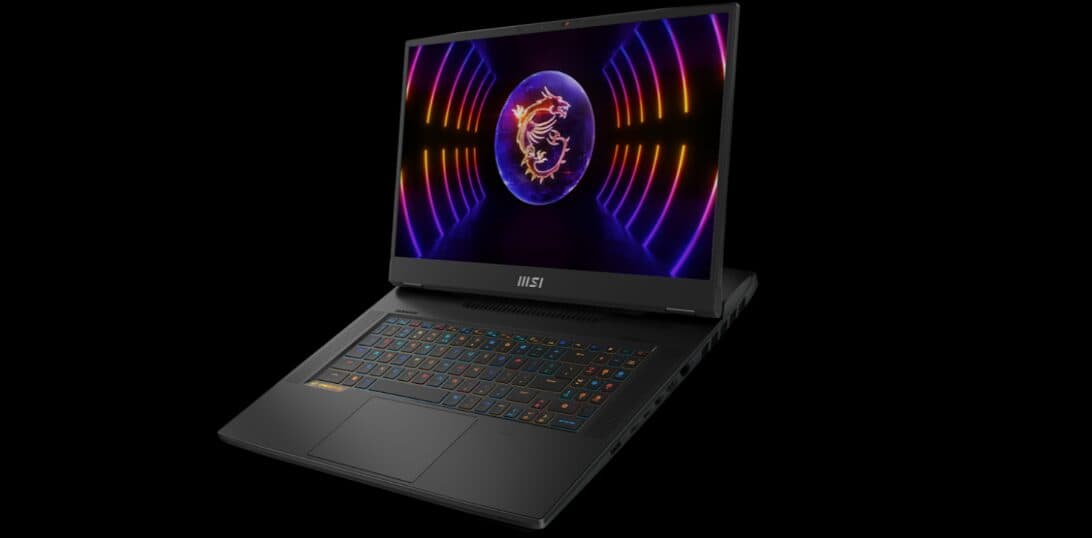
In PCMag’s HandBrake 1.4 test, the MSI laptop managed to convert a 12-minute video clip from 4K to 1080p resolution seconds faster (3:28) than ROG Strix Scar 18, which did for 3:35. Titan GT77 HX also gained a few points more than its rival in other benchmark tests including in Geekbench (20,513 versus 20,402), Time Spy (20,422 versus 20,283), and GFXBench 5.0 Aztec Ruins (530 versus 505). Here are more benchmark scores of MSI Titan GT77 HX and Asus ROG Strix Scar 18 performed by Laptop Mag:
MSI Titan GT77 HX:
Geekbench 5.4: 2,073 (Single-Core), 20,617 (Multi-Core)
3DMark Fire Strike: 33,620
3DMark Time Spy: 19,726
3DMark Fire Strike Ultra: 14,031
3DMark Time Spy Extreme: 10,807
3DMark Port Royal (Ray Tracing): 13,975
25GB file copy disk speed test: 2,299.3 MBps
Asus ROG Strix Scar 18
Geekbench 5.4: 2,066 (Single-Core), 19,233 (Multi-Core)
3DMark Fire Strike: 33,138
3DMark Time Spy: 18,327
3DMark Fire Strike Ultra: 12,655
3DMark Time Spy Extreme: 9,513
3DMark Port Royal (Ray Tracing): 12,345
25GB file copy disk speed test: 1,885.8 MBps
In terms of gaming, Titan GT77 HX can also deliver a much better visual experience due to its 4K offering, though a higher setting apparently means fewer frames per second. For instance, it reached 128 fps at 1080p and 48 fps at native 4K (versus Strix Scar 18’s 123 fps at 1080p and 86 fps at 1600p) in Red Dead Redemption’s Medium setting, 177 fps at 1080p and 71 fps at 4K (versus 165 fps at 1080p and 112 fps at 2560 x 1600) in Borderlands 3’s Badass setting, 180fps at 1080p and 70 fps at 4K (versus 181 fps at 1080p and 124 fps at 2560 x 1600) in Shadow of the Tomb Raider’s Highest setting, 176 fps at 1080p and 50 fps at 4K (versus 152 fps at 1080p and 132 fps at 2560 x 1600) in Grand Theft Auto V’s Very High setting.
Best 2023 Windows i9 laptops: Are they worth buying?
Picking a laptop should always be based on your needs, and following this will ensure you’ll get the best out of your money. The first step to do it is to know how the CPU is designed for a particular Windows laptop. For instance, Core i9-12950HX is being used by ThinkPad P16 and Asus ROG Strix Scar 17 SE, but these laptops have different general purposes. While P16 is considered a mobile workstation, Strix Scar 17 SE is dedicated to gamers. That’s because of the other components integrated into the unit (e.g., GPU) and how the laptops are built and designed in general.
On the other hand, having the same GPU and CPU models doesn’t mean equal performance in two different laptops. Take Asus ROG Strix Scar 18 and MSI Titan GT77 HX as examples. Both use Intel Core i9-13980HX and Nvidia GeForce RTX 4090, but there are still a few differences in their performances, as proven in various benchmarks above. That’s because of each laptop’s other unique elements and specifications, such as the 4K resolution of Titan GT77 HX. That said, considering other things beyond the CPU and GPU will lead you to the right choice.








User forum
0 messages